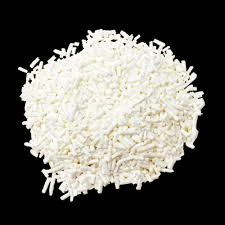
list of mining chemicals
The Role of Mining Chemicals in the Industry
Mining is a crucial sector that plays a significant role in the global economy by supplying essential minerals and metals that are utilized in various industries. However, the extraction and processing of these resources require the use of various mining chemicals. These chemicals, essential for enhancing the efficiency and effectiveness of mining operations, are utilized in several areas, including flotation, leaching, and purification processes.
Types of Mining Chemicals
Mining chemicals can be broadly categorized into several groups based on their functions
1. Flotation Agents These chemicals are used to separate minerals from their ores. Flotation agents, such as collectors and frothers, enhance the hydrophobicity of the mineral surfaces, allowing them to attach to air bubbles and rise to the surface. Common collectors include xanthates and fatty acids, while frothers such as methyl isobutyl carbinol (MIBC) help stabilize the froth formed during this process.
2. Leaching Agents Leaching is a process where soluble minerals are extracted from ores by applying solvents. Common leaching chemicals include cyanides for gold extraction and sulfuric acid for copper recovery. The efficiency of these leaching agents significantly impacts the overall recovery rates of the valuable minerals.
3. pH Regulators Maintaining the correct pH level is crucial in many mining processes, as it influences the chemical behavior of the materials involved. Common pH regulators like lime (calcium oxide) and sulfuric acid can control acidity or alkalinity, ensuring optimal conditions for mineral extraction.
list of mining chemicals

4. Antiscalants and Dispersants These chemicals are crucial in preventing the formation of scale and ensuring the effective dispersion of particles in processing solutions. They help maintain the smooth operation of equipment, preventing costly downtime and maintenance associated with scale buildup.
5. Surfactants Surfactants are used in various applications in mining, primarily to improve the wetting properties of water in mineral processing. These chemicals reduce surface tension, allowing for better interaction between minerals and water.
Environmental Considerations
While mining chemicals significantly enhance recovery rates and improve the efficiency of mining operations, their use raises environmental concerns. Many chemicals, such as cyanides and heavy metals, can be toxic to aquatic life and ecosystems if not managed properly. As a result, mining companies are increasingly held accountable for their environmental impact, leading to the development of more sustainable practices.
Innovations in mining chemistry have led to the creation of more environmentally-friendly alternatives, such as biodegradable collectors and less toxic leaching agents. Additionally, advances in technology, such as bioremediation, allow for the detoxification of mining waste, reducing the overall ecological footprint of mining operations.
Conclusion
The use of mining chemicals is integral to the success of modern mining operations, contributing to greater efficiency and productivity in mineral extraction. As the industry evolves, the focus on sustainable practices will continue to shape the development and application of mining chemicals. By balancing economic demands with environmental stewardship, the mining sector can work towards a more responsible and sustainable future, ensuring that precious resources are extracted with minimal impact on the planet. The ongoing research and innovation in mining chemistry will play a vital role in achieving these goals, ultimately fostering a more sustainable interaction between mining activities and the environment.
-
Buy High-Quality Trichloroisocyanuric Acid for Sale | TCCA 90% SupplierNewsAug.30,2025
-
Pure Sodium Dichloroisocyanurate Dihydrate | Powerful DisinfectantNewsAug.29,2025
-
Industrial Chemicals: Quality & Purity for Every IndustryNewsAug.28,2025
-
Nitrile Rubber Honoring Strict Production StandardsNewsAug.22,2025
-
Aspartame Ingredients Honoring Food Safety ValuesNewsAug.22,2025
-
Fertilizer for Balanced Plant NutritionNewsAug.22,2025
-
Cyanide Gold Processing with High Purity AdditivesNewsAug.22,2025
Hebei Tenger Chemical Technology Co., Ltd. focuses on the chemical industry and is committed to the export service of chemical raw materials.
-

view more DiethanolisopropanolamineIn the ever-growing field of chemical solutions, diethanolisopropanolamine (DEIPA) stands out as a versatile and important compound. Due to its unique chemical structure and properties, DEIPA is of interest to various industries including construction, personal care, and agriculture. -

view more TriisopropanolamineTriisopropanolamine (TIPA) alkanol amine substance, is a kind of alcohol amine compound with amino and alcohol hydroxyl, and because of its molecules contains both amino and hydroxyl. -

view more Tetramethyl Thiuram DisulfideTetramethyl thiuram disulfide, also known as TMTD, is a white to light-yellow powder with a distinct sulfur-like odor. It is soluble in organic solvents such as benzene, acetone, and ethyl acetate, making it highly versatile for use in different formulations. TMTD is known for its excellent vulcanization acceleration properties, which makes it a key ingredient in the production of rubber products. Additionally, it acts as an effective fungicide and bactericide, making it valuable in agricultural applications. Its high purity and stability ensure consistent performance, making it a preferred choice for manufacturers across various industries.





